Kenneth L. Gentry Jr.'s Blog, page 14
July 2, 2024
DOMITIAN’S PERSECUTION (AGAIN)
PMW 2024-052 by Kenneth L. Gentry, Jr.
I keep hearing and reading folks referring to Domitian’s severe persecution of Christians, claiming that it was much more severe and widespread than Nero’s earlier persecution. This is significant in light of the debate over the dating of Revelation. Late-date advocates argue that Revelation was written about the intense persecution under the emperor Domitian. Whereas early date advocates argue that it was written prior to Nero’s persecution twenty years earlier.
I have found that too often people are simply regurgitating what they have heard someone else say. They do this as if it were self-evident that Nero’s persecution paled in comparison to Domitian’s. But when we read many competent biblical and historical scholars, we see a serious diminishing of this proposed understanding of early persecution. In this article I will simply cite a few academic sources that should discourage us from simply assuming Domitian was a great persecutor, a beast . . . in fact, the beast of Revelation.
Consider the following comments by reputable scholars.
I will begin with an important paper written expressly on this point. Barclay Newman published his study, “The Fallacy of the Domitian Hypothesis: Critique of the Irenaeus Source as a Witness for the Contemporary Historical Approach to the Interpretation of the Apocalypse.” This was published in the academic journal, New Testament Studies (10:1, October 1963), pages 133-39. Newman explodes the myth of the Domitianic persecution. This can be found at:
https://www.cambridge.org/core/journals/new-testament-studies/article/abs/fallacy-of-the-domitian-hypothesis-critique-of-the-irenaeus-source-as-a-witness-for-the-contemporary-historical-approach-to-the-interpretation-of-the-apocalypse/899CC2AC9AB3B64DFF836944AE223BB7
BEFORE JERUSALEM FELL
Doctoral dissertation defending a pre-AD 70 date for Revelation’s writing (459 pp; paperback). Thoroughly covers internal evidence from Revelation, external evidence from history, and objections to the early date by scholars.
For more study materials: https://www.kennethgentry.com/
Shortly thereafter, the (non-dispensational) premillennial scholar George E. Ladd wrote his A Commentary on the Revelation of John (Eerdmans, 1972). On pages 8–9 we read: “Tradition has ascribed the Revelation to the last decade of the first century when Domitian was emperor in Rom (A. D. 81–96).” He goes on to say: “The problem with this theory is that there is no evidence that during the last decade of the first century there occurred any open and systematic persecution of the church…. The alleged persecution by Domitian was by no means empire-wide but was directed against a few families in Rome.”

Blessed Is He Who Reads: A Primer on the Book of Revelation
By Larry E. Ball
A basic survey of Revelation from an orthodox, evangelical, and Reformed preterist perspective. Ball understands John to be focusing on the destruction of Jerusalem and the temple in AD 70. Insightful. Easy to read.
For more Christian studies see: www.KennethGentry.com
The noteworthy Introduction to the New Testament by Carson, Moo, and Morris (Zondervan 1992) notes similarly: “Advocates of the Domitianic date have generally appealed to the early Christian tradition that picture the years 95–96 as a period of intense persecution…. Advocates of an early date have a point: many scholaris have exaggerated the evidence for a persecution of Christian under Domitian. The evidence suggests rather that Domitian in the last years of his reign instituted a purge of Roman aristocrats who might challenge his power” (p. 474).
C. F. D. Moule’s The Birth of the New Testament (Harper and Row, 1982, p. 153) concurs: “The alleged persecution under Domitian, to which the relevant passages of the Apocalypse are usually referred, cannot be established.”
Leon Morris’ “Tyndale New Testament Commentary” on Revelation (IVP 1987, p. 37), follows suit: “It is very difficult to find evidence that Domitian did in fact persecute people outside Rome. There is evidence of his having certain people executed there, such as Flavius Clemens and his wife Domitilla…. While later Christian speak of a persecution under Domitian the evidence is not easy to find.”
Stephen S. Smalley’s The Revelation to John (IVP 2005, p. 142) agrees with the preceding. He writes: “The severity of that oppression int the later part of the first Christian century, particularly under Domitian, has been questioned recently.” He cites Iain Boxall’s Revelation (pp. 98–104) and T. B. Slater’s “On the Social Setting of the Revelation to John” (New Testament Studies 44, 1988, pp. 232–56).
The Reformed Eschatology of Geerhardus Vos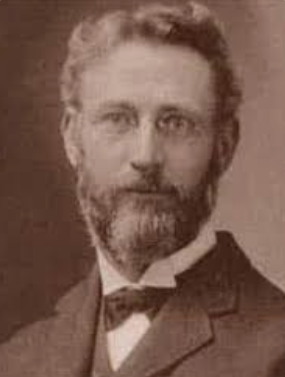
Ed. by Ken Gentry and Bill Boney
This collection of several key eschatological studies by the renowned theologian Geehardus Vos will be published in late Summer or early Fall 2024. We have modernized Vos’ grammar and syntax and updated his publications according to modern style conventions (shorter sentences and paragraphs).
For information on the upcoming Geerhardus Vos work, see:
https://axeheadpress.com/pages/coming-soon-vos
I could continue. But I am weary. And supper is calling (I closely follow the Pauline love of food whereby he declares “I buffet my body”). I believe these few samples should at least turn the volume down somewhat on a Domitianic persecution as evidence for the late-date of Revelation.
Click on the following images for more information on these studies:

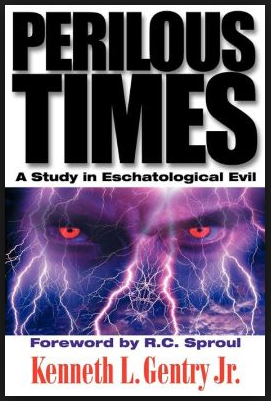
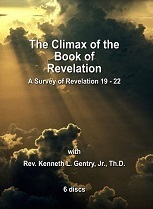
June 28, 2024
MATTHEW READ WRONGLY
PMW 2024-051 by Kenneth L. Gentry, Jr.
My brief survey of Matthew’s Gospel is important for setting up the broader literary context of the Olivet Discourse with its warning of Israel’s judgment in AD 70. Both Jesus’ regular teaching and frequent actions, as well as Matthew’s overall historical progression and literary presentation powerfully highlight God’s approaching wrath upon Israel. This understanding of Matthew is so clear as to be undeniable. In fact, Lowery — though a dispensationalist — can even speak of “the strong denunciation of Israel that pervades the gospel” and which employs a “strong polemic against Israel.”[1]
This presentation of Israel’s disturbing spiritual condition and foreboding historical expectation is so obvious, strong, frequent, and widespread that many liberal historians and theologians (wrongly) charge Matthew’s Gospel as a prime source of anti-Semitism in the world.
Jewish scholar Flusser comments on Matthew 8:11–12 regarding the “sons of the kingdom” being cast out: “This is a vulgar anti-Judaism of many members of the early Gentile church.”[2] Gaston warns that “there is a great deal in Christian theology which needs to be rethought after Auschwitz, and one good place to begin is with Matthew.” [3] Regarding the infamous statement in Matthew 27:25 (“His blood shall be on us and on our children”), Galambush laments: “It is hard to imagine a more anti-Jewish account than this ‘most Jewish’ gospel.”[4]
Openness Unhindered (by Rosaria Butterfield)
Dr. Butterfield goes to great lengths to clarify some of today’s key controversies. She also traces their history and defines the terms that have become second nature today-even going back to God’s original design for marriage and sexuality as found in the Bible. She cuts to the heart of the problems and points the way to the solution.
See more study materials at: www.KennethGentry.com
In his renowned Hermeneia commentary on Matthew, Ulrich Luz states that
“in the Gospel of Matthew (and here Matthew’s entire narrative including its conclusion, is to be considered) it is at least implied by [Matt. 21:43] that the entire nation loses is election…. Thus Matthew is in fact one of the fathers of the ‘succession theory’ that later became dominant and according to which the church has taken Israel’s place as the chosen people…. Here the roots of Christian anti-Judaism lie in the biblical text itself. Verse 43 is a polemical statement disguised as a basic principle that formulates its result in a painful controversy over Israel. . . . Here, therefore, we cannot remove the anti-Jewish ‘original sin’ from the Bible and locate it in the history of the church.”[5]
[image error]For more information and to order click here.
" data-image-caption="" data-medium-file="https://postmillennialworldview.com/w..." data-large-file="https://postmillennialworldview.com/w..." tabindex="0" role="button" class="alignright size-full wp-image-211" src="https://postmillennialworldview.com/w..." alt="" />Perilous Times: A Study in Eschatological Evil (by Ken Gentry)
Technical studies on Daniel’s Seventy Weeks, the great tribulation, Paul’s Man of Sin, and John’s Revelation.
See more study materials at: www.KennethGentry.com
This is a naive reading of the New Testament’s polemical critique of Israel. Ancient rhetoric was far more vigorous than in our overly-sensitive modern world of political-correctness, diversity-equity-inclusion. Jesus himself employs insulting epithets, calling the scribes and Pharisees “hypocrites” (Matt. 23:13, 15, 23, 25, 27, 29), a “son of hell” (23:15), “blind guides” (23:16, 24),” “blind men” (23:17, 19), “fools” (23:17), and “serpents … brood of vipers” who deserve hell (23:33). He accuses them of ostentatious religiosity (23:5–6), shutting people out of the kingdom of God (23:13), as well as charging them with robbery and self-indulgence (23:25). Indeed, they are nothing but “dead men’s bones and all uncleanness” (23:27), and murderers of the prophets (23:31).
The Reformed Eschatology of Geerhardus Vos
Ed. by Ken Gentry and Bill Boney
This collection of several key eschatological studies by the renowned theologian Geehardus Vos will be published in late Summer or early Fall 2024. We have modernized Vos’ grammar and syntax and updated his publications according to modern style conventions (shorter sentences and paragraphs).
For information on the upcoming Geerhardus Vos work, see:
https://axeheadpress.com/pages/coming-soon-vos
But rather than being anti-Semitic diatribes, this language is stereotypical rhetoric that was widely-used by the Jews themselves in inter-party squabbles. Davies and Allison list many parallels between Jesus’ long denunciation in Matthew 23 and ancient Jewish practice.[6] Not only so, but this sort of strong invective was employed by the Old Testament prophets. Indeed, Isaiah 5:8–23 almost seems to be Jesus’ model.
As evangelical Christians we must recognize the redemptive-historical significance of Matthew’s strong message against Israel. This is exactly what Israel’s own Bible, our Old Testament, warns about when she rebels against God:
“But it shall come about, if you will not obey the Lord your God, to observe to do all His commandments and His statutes with which I charge you today, that all these curses shall come upon you and overtake you . . . . The Lord will bring a nation against you from afar, from the end of the earth, as the eagle swoops down, a nation whose language you shall not understand, a nation of fierce countenance who shall have no respect for the old, nor show favor to the young…. And it shall besiege you in all your towns until your high and fortified walls in which you trusted come down throughout your land, and it shall besiege you in all your towns throughout your land which the Lord your God has given you…. And it shall come about that as the Lord delighted over you to prosper you, and multiply you, so the Lord will delight over you to make you perish and destroy you; and you shall be torn from the land where you are entering to possess it. (Deut 28:15, 49–50, 52, 63)”
This is not anti-Semitism; it is biblical covenantalism.
Click on the following images for more information on these studies:


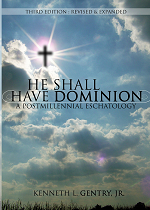
Notes
1. David K. Lowery, in Donald K. Campbell and Jeffrey L. Townsend, eds., A Case for Premillennialism: A New Consensus (Chicago: Moody, 1992), 166, 171.
2. David Flusser, Judaism and the Origins of Christianity (Jerusalem: Magness, 1988), xxiii.
3. Lloyd Gaston, “The Messiah of Israel as Teacher of the Gentiles: The Setting of Matthew’s Theology,” Interpretation 29: (1975): 39.
4. Julie Galambush, The Reluctant Parting: How the New Testament’s Jewish Writers Created a Christian Book (San Francisco: HarperSanFrancisco, 2005), 125. Evangellical theologian Christopher Wright deems Matthew “the most Jewish of the Gospels” (Knowing Jesus, 60).
5. Ulrich Luz, Matthew 21–28 (Hermeneia), trans. by James E. Crouch, ed. by Helmut Koester (Minneapolis: Fortress, 2005), 44.
6. W. D. Davies and Dale C. Allison, Jr., The Gospel according to Saint Matthew (ICC) (Edinburgh: T & T Clark, 1988), 3: 3:258–61. For example, the Dead Sea Scrolls were written by a hyper-orthodox Jewish sect (the Essenes) who withdrew from Jerusalem in despair over the corruption of the priesthood, cult, and temple. Their polemic against Israel is downright vicious.
Click on the following images for more information on these studies:



June 25, 2024
JESUS REJECTED TURNS TO THE GENTILES
PMW 2024-050 by Kenneth L. Gentry, Jr.
I am now at the conclusion of Matthew’s Gospel. Though I did not survey the entire Gospel, I showed it’s beginning and ending provided the rationale for the destruction of the temple and the judgment of Israel. And in the process of Israel’s rejecting their Messiah, we have seen evidence for the inclusion of the Gentiles. This last point comes to full expression in the last words of the Gospel.
Matthew 27
In Matthew 27:1 “all the chief priests” discuss with the “elders of the people” how to kill Jesus. In verses 11–12 Jesus appears before the Roman procurator Pilate where the chief priests and elders accuse him. In verses 15–21 when Pilate tries to release Jesus, the chief priests resist him: “but the chief priests and the elders persuaded the multitudes to ask for Barabbas, and to put Jesus to death” (v. 20). When Pilate attempts again to release him, “they kept shouting all the more, saying, ‘Let Him be crucified’” (v. 22).
Finally, Pilate declares himself innocent of Christ’s blood (Matt. 27: 24). Then we read: “And all the people answered and said, ‘His blood be on us and on our children!’” (v. 25). Their self-condemnatory cry eventually comes to pass with the destruction of Jerusalem in AD 70.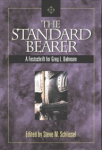
Standard Bearer: Festschrift for Greg Bahnsen (ed. by Steve Schlissel)
Includes two chapters by Gentry on Revelation and theonomy. Also chapters on apologetics, politics, ecclesiology, covenant, and more.
See more study materials at: www.KennethGentry.com
Then while the Lord is dying on the cross, the people and the leaders mock him one last time:
“And those passing by were hurling abuse at Him, wagging their heads, and saying, “You who are going to destroy the temple and rebuild it in three days, save Yourself! If You are the Son of God, come down from the cross.” In the same way the chief priests also, along with the scribes and elders, were mocking Him, and saying, “He saved others; He cannot save Himself. He is the King of Israel; let Him now come down from the cross, and we shall believe in Him.” (Matt. 27:39–42)
Consequently, we once again see evidence of Gentile salvation in the very context of Jewish rejection of Christ. In Matthew 27:54 we read regarding the Roman guard at Jesus’ tomb: “Now the centurion, and those who were with him keeping guard over Jesus, when they saw the earthquake and the things that were happening, became very frightened and said, ‘Truly this was the Son of God!’”
Matthew 28
Here we come to the apostle’s final recorded events, which lead up to and include Jesus’ issuing the Great Commission. As Valabanski notes: “the final verses of Matthew’s Gospel cannot be interpreted in isolation. It is the Gospel in its entirety that gives content and depth to the word of the Risen Christ in Mt 28:18–20.” [1]
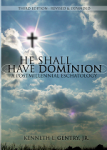
He Shall Have Dominion
(paperback by Kenneth Gentry)
A classic, thorough explanation and defense of postmillennialism (600+ pages). Complete with several chapters answering specific objections.
See more study materials at: www.KennethGentry.com
Interestingly in this regard, we have the last appearance of Jerusalem in the Gospel, which appearance “casts the city in a negative light.” [2] After the resurrection, the Jews guarding his grave (Matt. 28:11; cp. 27:65–66) “went into the city [Jerusalem] and told the chief priests” that Jesus had been resurrected (cp. vv. 2–6). Then these religious leaders quickly concoct a plan to deny the report of Jesus’ resurrection. They bribe the Roman guards who had been stationed at his tomb, directing them to claim that his disciples stole his body (vv. 12–15). This is another unique feature of Matthew’s Gospel, which provides further evidence that Matthew is intentionally showing the vehement resistance of Israel to Jesus.
Then as the Gospel closes, Jesus appears to his disciples and issues his Great Commission (Matt. 28:18–20)— still another unique feature of Matthew that underscores God’s judgment on Israel. In this Commission, Jesus commands his followers to take the gospel to “all nations” (28:19), rather than limiting their ministry to Israel — as he had previously done (10:16–17; 15:24; cp. Acts 1:8). As Brown and Roberts observe: “Matthew’s decision to conclude his Gospel by widening this [Matt. 10:5–6; 15:24] missional scope suggests that gentile inclusion and mission provide a significant message for his audience.” [3] He is turning from the Jews, who have rejected him (Matt. 21:43; 23:37; 27:20–25, 38–42), in order to reach out to all the nations (v. 19; cp. Luke 24:46–47).
In this context, the disciples leave Israel’s capital city, Jerusalem, where they have been since the “Triumphal Entry” at the beginning of Passion Week (Matt. 21:1; cp. 28:5–9). They go to Galilee (28:6, 10, 16), which is called in Scripture, “Galilee of the Gentiles” [i.e., “nations,” Gk., ethnon]” (Isa. 9:2; Matt. 4:15). This is where he began his ministry to Israel (Matt. 4:12–17), and is now where he will begin his ministry to the nations. Thus, “Matthew’s concluding reference to ‘all nations’ (v. 19) indicates that this centrifugal dynamism (going out from Jerusalem to Galilee) was designed to show the out-going nature of the gospel message.” [4]
[image error]For more information and to order click here.
" data-image-caption="" data-medium-file="https://postmillennialworldview.com/w..." data-large-file="https://postmillennialworldview.com/w..." tabindex="0" role="button" class="alignright size-full wp-image-209" src="https://postmillennialworldview.com/w..." alt="Navigating the Book of Revelation: Special Studies on Important Issues" />Navigating the Book of Revelation (by Ken Gentry)
Technical studies on key issues in Revelation, including the seven-sealed scroll, the cast out temple, Jewish persecution of Christianity, the Babylonian Harlot, and more.
See more study materials at: www.KennethGentry.com
Jesus is no Jewish sage, focusing solely on Israel. Rather, he is the cosmic Lord of all nations, who is here permanently expanding his mission. So, he will not only judge Israel (Matt. 24:4–34; cp. 28–44; 22:1–14) but eventually “all the nations” (25:31–46). To this end, he now declares his universal authority (28:18; cp. 13:41–43, 47–50), universal mission (v. 19; cp. 21:42–43; 22:9–10), and universal presence (v. 20; cp. 18:20).
He entrusts his disciples with the sacrament of baptism in order to apply the name of the Triune God to the nations: “Go therefore and make disciples of all the nations, baptizing them in the name of the Father and the Son and the Holy Spirit” (Matt. 28:19). The Jews have rejected his identity as the Son of God, not only condemning him to death for it (26:63–66) but mocking him for it while he suffers on the cross (27:43) — even though the Gentile centurion recognizes that he is the Son of God (27:54).
The Reformed Eschatology of Geerhardus Vos
Ed. by Ken Gentry and Bill Boney
This collection of several key eschatological studies by the renowned theologian Geehardus Vos will be published in late Summer or early Fall 2024. We have modernized Vos’ grammar and syntax and updated his publications according to modern style conventions (shorter sentences and paragraphs).
For information on the upcoming Geerhardus Vos work, see:
https://axeheadpress.com/pages/coming-soon-vos
Surprisingly, Matthew’s Gospel closes with the resurrected Jesus still on earth, rather than with his ascending into heaven (cp. Luke 24:51). Bauer notes that this “leaves the culmination of his Gospel open-ended.” [5] And it throws great emphasis on Jesus’ closing words: “I am with you always, even to the end of the age” (Matt. 28:20). This declaration serves as an inclusio for the Gospel’s whole story of Jesus. [6] For at the announcement of his birth, the angel declares his name to be “Immanuel,” which means “God with us” (1:23). Here Jesus, as the Son of God (note the baptismal formula mentioning the Father and the Son, v. 19), declares that he will be “with you always” (v. 20). It also shows the Gentile-oriented goal of Matthew’s Gospel (see notes at the beginning of this chapter).
Notes
1. Vicky Balabanski, “Mission in Matthew against the Horizon of Matthew 24,” unpublished seminar paper of the Society of Biblical Literature Annual Meeting (Philadelphia, Nov. 2005), 1.
2. P. W. L. Walker, Jesus and the Holy City, 39.
3. Jeannine K. Brown and Kyle Roberts, Matthew (THNTC) (Grand Rapids: Eerdmans, 2018). 18.
4. Walker, Jesus and the Holy City, 39.
5. David Bauer, Structure of Matthew’s Gospel, 114.
6. For a full argument for this serving as an inclusio, see Bauer, Structure, ch. 8.
Click on the following images for more information on these studies:
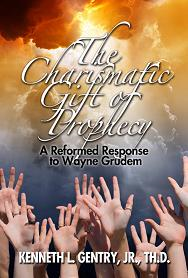
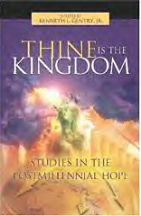
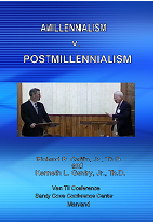
June 21, 2024
NEW BOOK ON GEERHARDUS VOS’ ESCHATOLOGY
PMW 2024-049 by Kenneth L. Gentry, Jr.
Bill Boney, a good friend of mine, and I have co-edited a book that should be released later this Summer. I hope this work will be well received not only in the Reformed world, but also more widely in the evangelical realm. We are thankful for the skillful competence of our publisher Kyle Shepherd who has pressed us to complete and release this work
What is this book? And what is it all about? It’s working title (which could change) is The Reformed Eschatology of Geerhardus Vos.
INTRODUCING GEERHARDUS VOS
We have edited several of Geerhardus Vos’ works on eschatology. Vos (1862–1949) was a theological genius with many ground-breaking and invaluable insights into the covenantal structure of Scripture and redemptive history. Fortunately, his memory and works have been kept alive over the years seventy-five years since his death. But unfortunately, his works are not as widely read as the deserve, or as they need to be in this confused time in which we live.

Perspectives on Pentecost (Richard Gaffin)
A careful examination of the New Testament teaching on the gifts of the Spirit by Vos scholar, Richard B Gaffin, Jr. Gaffin makes a case for the cessation of tongues at the close of the apostolic era. Gaffin is professor emeritus of biblical and systematic theology at Westminster Theological Seminary, Philadelphia.
See more study materials at: www.KennethGentry.com
There are perhaps two leading reasons Vos has not been as widely read in popular circles in recent times.
First, the scholarly depth of Vos’ exegesis and the philosophical nature of his argumentation. His books were highly technical and not written for church-growth seminars. Sadly, in most modern seminaries today practical theology (though important) has elbowed systematic and exegetical theology out of the way, despite these being foundational to the Christian faith.
Second, since Vos wrote a century ago, his grammar and style are at times antiquated and cumbersome. As with all scholarly writings of that era, he employed quite lengthy sentences organized into painfully long paragraphs. His sentences present a formidable challenge for even the ablest English grammarian to diagram (if anyone this side of hell still diagrams sentences). Many of his paragraphs stretch on for several pages. For instance, the second paragraph in The Pauline Eschatology extends for over four pages — and he is just getting started! Almost no paragraph is less than a page in length. And imbedded in these long sections are footnotes that themselves are sometimes a page or more long. And they are only that short due to the type font being so small that many leading ophthalmologists suspect they may be a cause of the growing problem of macular degeneration among Reformed scholars. I (Ken Gentry) myself have long suspected that the Library of Congress may be a footnote to one of Vos’ lost books.
But now, why have we, the editors of this present work, taken the time and effort to produce this book on Vos’ eschatology? Both editors have a strong interest in eschatology, and especially form a Reformed perspective. And as Vos demonstrates, eschatology is foundational to soteriology and thus to the very gospel itself (note the beginning of eschatology in the first promise of the gospel in Gen. 3:15). Gentry has written numerous books on eschatology. Boney is not only an avid student of Reformed theology but has proof-read several of Gentry’s eschatological books before their going to press. And both editors are Vos enthusiasts — even though Vos is amillennial and we are postmillennial.
[image error]For more information and to purchase click here.
" data-image-caption="" data-medium-file="https://postmillennialworldview.com/w..." data-large-file="https://postmillennialworldview.com/w..." class="alignright size-full wp-image-213" src="https://postmillennialworldview.com/w..." alt="Predestination Made Easy" />Predestination Made Easy
(by Ken Gentry)
A thoroughly biblical, extremely practical, and impressively clear presentation of
the doctrine of absolute predestination.
See more study materials at: www.KennethGentry.com
Because of our mutual interest in both eschatology and in Vos as a Reformed scholar, we are bringing together several of his articles and chapters that are so needful in today’s theological environment. Eschatological discussions today are dominated by large-scale dispensationalism on the one hand and troubled by tiny-but-tenacious hyper-preterism on the other. These theological systems stand at opposite ends of the eschatological spectrum, hyper-preterism even standing outside of orthodoxy, though being tempting to some incautious evangelicals.
In our book we have included the most relevant chapters from Vos’ 1930 book The Pauline Eschatology (chs. 1, 2, 6, 7, 8, 9, 11, and 12). These appear in our book as chapters 1–2 and 4–9. Also incorporated within is an important article by Vos titled “The Eschatological Aspect of the Pauline Conception of the Spirit,” which appears as chapter 3 below. This was first published in the journal Biblical and Theological Studies in 1912, and more recently in Gaffin’s Redemptive History and Biblical Interpretation in 1980.
In Appendix 1 (“The New Heavens and the New Earth”) we have included several paragraphs from Vos’ Reformed Dogmatics as well as one of his articles from The International Standard Bible Encyclopedia: “Eschatology, of the New Testament” (1915). These important studies touch on the biblical teaching of the ultimate consummation order. This doctrine is an important counter against the new Gnosticism currently impacting some in modern popular theology. This new Gnosticism is denying the physical resurrection of the body. And it even re-formulates the physical resurrection of Jesus by denying his perpetual incarnation which continues in heaven since ascension. It also rejects a corporeal consummate order, arguing that God will do away with the material world as we live forever in heaven as spiritual beings. Appendix 2 presents chapter 9 from Vos’ book The Teaching of Jesus concerning the Kingdom of God and the Church (1903).
OUR METHOD
We have included the above materials from Vos with editorial changes. We have (hopefully!) not altered any of his theological commitments or changed his arguments. Rather, our intent was to make several stylistic and grammatical modifications so that he might be read more easily today. We have also slightly modified some of Vos’ original article or chapter titles either to make them a little more expressive or a little less cumbersome.
Three Views on the Millennium and Beyond
(ed. by Darrell Bock)
Presents three views on the millennium: progressive dispensationalist, amillennialist, and reconstructionist postmillennialist viewpoints. Includes separate responses to each view. Ken Gentry provides the postmillennial contribution.
See more study materials at: www.KennethGentry.com
All of the materials contained in our book has already been published elsewhere. So, why are we compiling them in our book? It is not because retirement for each of us has gotten boring (though it has). We will explain the editorial alterations that we have made under five headings: (1) Modern Style Issues. (2) Publishing Convention Issues. (3) Foreign Language Issues. (4) Bible Version Issues. (5) Bibliographic Reference Issues.
Modern Style Issues
Presentation style. We have used a modern type font which is more attractive and easier to read than Times New Roman; we have used Amerigo BT. Thus, upon opening the book, this change leaps out at the modern reader. Furthermore, being newly typeset, the text has not suffered any generational loss of clarity due to numerous reprintings from old proofs.
At several places the editors have even pulled some of Vos’ long footnotes into the main body of the text. We intended this to make it easier for the reader to keep moving ahead without having to pause and look to the bottom of the page, which can be disrupting and annoying. In addition, a few of his footnotes simply provided additional verses to those already listed in the main text. This is unnecessary, so we simply inserted them into the parenthetical listing in the main text, then deleted the footnote.
Particularly aggravating in today’s world are Roman numerals, which Vos always used in references from Scripture and other ancient works, such as apocalyptic writings, Philo, Josephus, and others. These have been replaced by Arabic numerals. The Roman Empire has fallen, so we have taken it upon ourselves to banish the cumbersome Roman numerals. This will prevent the problem of modern Americans from walking into a bar in Italy, holding up two fingers, and then receiving five beers. Furthermore, as has been noted in our day, there are II types of people: those who understand Roman numerals and those who do not. Thus, today we must ask: What are Roman numerals good IV in a text such as ours?
Writing style. As noted above, scholarly writings from Vos’ era involved lengthy sentences and large paragraphs. Not only so, but in Vos’ case, his native language was Dutch. Though English and Dutch are related Germanic languages, structural differences between the two languages are evident. One of the biggest differences is the matter of sentence word order. We have reduced the size of his long sentences and paragraphs that we deemed too unwieldy in our modern context. Where we broke his long sentences into shorter ones, we have added appropriate transitional words to maintain the proper flow. This was most easily done when he used semi-colons, which we often replaced by periods then separated the semi-colonized (!) material into new sentences. We also added frequent bolded section headings to help break up the material for the reader.
As Olinger notes: “Vos was a complex man, and his writings are no different. Gaffin, who assigns major portions of Vos for his students to read at Westminster Semianry, is fond of saying that every semester a student reading Vos for the first time comes up to him and asks when Vos is going to be translated into English.”
In a number of places, antiquated or unusual words in the original were replaced with more modern or familiar terms or spellings. Such words include, for example, “whilst” (changed to “while”), “art” (“are”), “nigh” (“near”), “no wise” (“no way”), “needful” (“necessary”), “thither” (“to” or “toward”), “phantastic” (“fantastic”), “periculous” (“perilous”), “Saviour” (“Savior”), “mould” (“mold”); “practise” (“practice”); “focussed” (“focused”); and so forth. Older style compounds are updated: “fountain-head” has become “fountainhead,” “age-long” (“agelong”), “can not” (“cannot”), “where as” (“whereas”); “None the less” (“nonetheless”); and others.
Older verbal expressions have also been altered. For instance, “it were wrong” becomes “it was wrong”; “it were foolish” (“it would be foolish”); and so forth.
We often find Vos’ word order to be contrary to contemporary expectations, causing some exasperation as the sentence has to be re-read in order to capture its point. However, we generally did not alter these since it would have involved much more extensive editing impacting virtually every sentence.
We also changed Vos’ capitalized grammatical notices to lower case. For instance, “Present Tense” is now “present tense”; “Imperfect Tense” (“imperfect tense”); “Niphal Participle” (“niphal participle”); and so forth. We also dropped periods from these common abbreviations: “O.T.” has become (“OT”), “N.T.” (NT), “B.C.” (BC), and “A.D.” (“AD”).
Publishing Convention Issues
We have attempted to bring greater harmony to Vos’ text. Publishing conventions today are much more exacting in this respect than in the early 1900s. Sometimes the original publishers of Vos’ work used italics for foreign words, sometimes regular font but in quotation marks, and at still other times they were bolded. We have replaced all of these with italics.
We have also used contemporary abbreviations for books of the Bible and standardized all of these. For instance, we use “Eze.” instead of “Ezek.” or “Ez.”, and “Matt.” instead of “Matth.” — since these (and other biblical references) were sometimes varied in Vos’ text. We have also dropped “Jno.” in John and 1 John abbreviations, in that these were not only based on the Latin (“Johannes”) but not very helpful in that they only shortened the title (“John”) by one letter but then replaced that by a period (“Jno.”).
Furthermore, we dropped Bible book abbreviations when appearing in the main text. Abbreviations are properly used today only in parentheses or footnotes. We also did this with the mention of “chapter(s)” also. In the main body, “chapter” or “chapters” is spelled out, whereas in parentheses and footnotes they are abbreviated “ch.” or “chs.” — and not “chap.” or “chaps.”
The Truth about Postmillennialism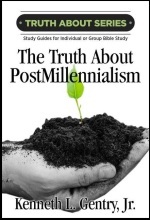 By Ken Gentry
By Ken Gentry
A group Bible study guide for explaining the optimistic prophetic hope for this world to be accomplished before Christ’s Second Coming. Establishes the postmillennial system in both the Old and New Testaments. Touches on key eschatological issues, such as creation, covenant, interpretive methodolgy, the great tribulation, the Book of Revelation, the Jewish Temple, and more. It presents and answers the leading objections to postmillennialism.Twelve chapters are ideal for one quarter of Sunday School.
See more study materials at: www.KennethGentry.com
Foreign Language Issues
Transliteration. We have transliterated Vos’ original-language citations from the Hebrew and Greek. Even his scholarly statements sometimes needed transliteration for our purposes, such as “διά cum genitivo” (“dia with the genitive”).
We updated his transliterated Greek words to the modern transliteration style — and put them in italics. For instance, his “ta ethne too kosmoo” has become “ta ethne tou kosmou”; “pleroma too chronoo” (“plerma tou chronou”); “ho aion hootos” (“ho aion houtos”); etc.
Translation. To make it easier for the lay reader to follows Vos’ thought, we translated Latin sentences and unfamiliar Latin phrases, which were often sprinkled throughout older scholarly works. For example, via oppositionis (has become “the way of opposition”); pro forma (“formality, as a matter of form”); nihil immutans in figura eorum (“not change their shape”); Ecclesia triumphans in aeternum (“church triumphant in eternity”); articulo mortis (“at the moment of death”); e mente sua (“out of his mind”); and “viz.” (“that is”); etc.
We also translated his scholarly German words and phrases. For example, “Grenzbegriff” (“boundary concept”); “Zeitlichkeit” (“time expanse”); “Gottwesen” (“deity”); uberhaupt nicht mehr Mensch (“no longer human at all”); vor der Hand (“before hand”); etc.
We changed “chiliasm” to the more familiar “premillennialism” where we could do so. If he referred to a title of a book with “Chiliasm” in it, we did not do so since that would change the book’s title.
Editorial Comments
We have added a few (very few) editorial footnotes. For instance, footnote 1 provides bibliographic information for Danny Olinger’s book on Vos. Plus we added a few notes for historical context in the introduction to the Appendix.
CONCLUSION
Again, we must say with devotion: Vos was a theological genius. His works need to be more widely read and considered in our day. And especially his works on eschatological issues, which he powerfully demonstrated were soteriological issues and even foundational to the whole Bible. We hope we have helped make Vos a little more accessible to contemporary Christians. We do not want current-day Christians to suffer the loss endured by Paul’s companions on the Damascus Road: when modern Christians have seen Vos mentioned today, unfortunately, they “saw the light . . . but did not understand the voice” (Acts 22:9).
If you would like to be notified when it is available, click here:
https://axeheadpress.com/pages/coming-soon-vos
If not, don’t! It’s that simple.
June 18, 2024
PARABOLIC WARNINGS TO ISRAEL
PMW 2024-048 by Kenneth L. Gentry, Jr.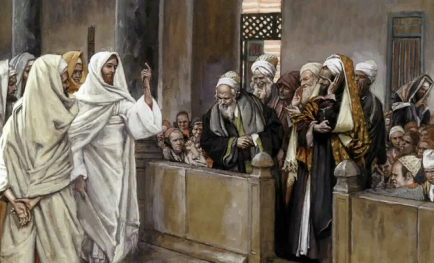
I am working my through Matthew showing the rejection of the Jews from God’s kingdom and the inclusion of the Gentiles. This helps us to see why the Olivet Discourse is given so late in Jesus’ ministry. He has given Israel every opportunity to believe in him, but they have refused. In the process we are seeing the gradual inclusion of the Gentiles in the biblical narrative. We are now ready to consider a few parabolic warnings to Israel, especially her leaders.
Matthew 22
In Matthew 22:1–14 Jesus presents the parable of the king (God) who gives a wedding feast for his son (Jesus). Those originally invited (the Jews, Matt. 10:5; 15:24) refuse to come (they do not accept Jesus as the Messiah, Matt. 23:37; 27:25; cp. John 1:11; cp. Acts 13:46; 18:6; 19:19)). As a consequence, “the king was enraged and sent his armies, and destroyed those murderers, and set their city on fire” (22:7).
This speaks of the Romans burning Jerusalem in AD 70, of which Josephus writes: “one would have thought that the hill itself, on which the temple stood, was seething hot, as full of fire on every part of it” (J.W. 6:5:1 §275). Of the Romans we read that: “they went in numbers into the lanes of the city with their swords drawn, they slew those whom they overtook without and set fire to the houses whither the Jews were fled, and burnt every soul in them” (J.W. 6:8:5 §404).
Not only so, but the parable presents another allusion to Gentile salvation — in the context of Jewish rejection. For when the Jews reject the invitation to the wedding feast for the king’s son, the king not only destroys their city, but he sends out his slaves with the command, “Go therefore to the main highways, and as many as you find there, invite to the wedding feast” (Matt. 24:9). His invitation moves out to the Gentiles, just as in the previous parable (21:43).

Dispensational Distortions
Three Lectures by Kenneth Gentry. Reformed introduction to classic dispensationalism, with analysis of leading flaws regarding the Church, kingdom, redemptive history, and Christ. Helpful for demonstrating errors to dispensationalists.
See more study materials at: www.KennethGentry.com
As Hagner explains: “The messianic banquet thus finds its eschatological fullness in the inclusion of such unlikely people as Gentiles (cf. Rom 11:25).” Gundry adds: “The insertion of oun [“therefore”] typifies Matthew’s diction … and makes the Jewish leaders’ unworthiness the reason for inviting all nations.” For these people “represent all nations (cf. 28:19–20).”
Matthew 23
In Matthew 23:13–33 Jesus utters seven woes upon the Pharisees who “have seated themselves in the chair of Moses” (v. 2), i.e., they have a leadership role over Israel through their interpretation of the Mosaic law. After issuing these woes against Israel’s interpretive authorities, in verses 32–36 he warns that first-century Israel will “fill up then the measure of the guilt of your fathers” by persecuting his followers “from city to city” so “that upon you may fall the guilt of all the righteous blood shed on the earth.” (Note Paul’s similar statement at 1 Thess. 2:14–16.)
The Early Date of Revelation and the End Times: An Amillennial Partial Preterist Perspective
By Robert Hillegonds
This book presents a strong, contemporary case in support of the early dating of Revelation. He builds on Before Jerusalem Fell and brings additional arguments to bear.
See more study materials at: www.KennethGentry.com
At the end of this long denunciation, the Lord dogmatically states: “Truly I say to you, all these things shall come upon this generation” (Matt. 23:36). This is obviously pointing to AD 70, which occurs forty years after Jesus speaks.
Notes
1. Hagner, Matthew 14–28, 631. Blomberg concurs (Matthew, 328).
2. Gundry, Matthew, p. 438.
3. In the NASB text we have eight woes. But the woe uttered at v. 14 is textually precarious and is probably an interpolation from Mark 12:40. Bruce M. Metzger, A Textual Commentary on the Greek New Testament (3d. ed.: New York: United Bible Society, 1971), 60.
June 14, 2024
HYPERPRETERISM & SLIP SLIDIN’ AWAY?
PMW 2024-059 by Kenneth L. Gentry, Jr.
An old lawyer’s maxim states: “If you can’t pound the facts, pound the table.” This loud procedure has been adopted by many Christians for spreading fear about orthodox (partial) preterism. They argue that many hyper-preterists were once partial-preterists, and thus orthodox preterism leads to heresy. Therefore, they loudly urge Christians to avoid all preterism as dangerous.
Partial preterism and hyper-preterism
Well, it is certainly true that many hyper-preterists started out as partial preterists. And they often boast about this fact. Indeed, Gary DeMar in his recent podcast about my Revelation commentary mentions this issue:
“Ken may not be a little upset with me when I say this but Full Preterists are going to delight in this because it fits so much of their perspective. In times past you will hear people say that one of the reasons they became full preterists is because of reading works by Ken Gentry and Gary Demar.”
Have We Missed the Second Coming: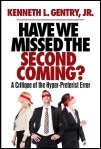
A Critique of the Hyper-preterist Error
by Ken Gentry
This book offers a brief introduction, summary, and critique of Hyper-preterism. Don’t let your church and Christian friends be blindfolded to this new error. To be forewarned is to be forearmed.
For more Christian educational materials: www.KennethGentry.com
I am well aware that most hypers start out as partial preterists, and that many have used my work as a springboard to hyperpreterism (against my vigorous warnings against such). That is sad, but true. Yet their falling into the hyper-preterist heresy cannot be blamed on the existence of the partial-preterist system or on partial-preterist advocates themselves.
In the early 1990s Greg Bahnsen had to fend off opponents of theonomy because of a number of knot-heads who adopted theonomy and caused ecclesiastical problems with it. Bahnsen pointed out that you have to distinguish between use and abuse. Theonomy was not the problem; the abuse of the position was the problem.
Certainly there are many points of contact between hyper-preterism and partial-preterism. After all, at the very least they both employ the word “preterism.” Thus, they obviously hold to some of the same conclusions. On certain texts. And we must note that AD 70 and the Second Advent/Final Judgment are theologically related, though historically distinct (as many evangelical scholars note). AD 70 points to the Final Judgment, as a type points to its anti-type.
In fact, as hermeneutics scholar David R. Bauer notes:
“Since Matthew employs this language of the coming of the Son of Man to describe the destruction of Jerusalem (Mt 10: 23; 16:28; 24:30) as well as Jesus’ second coming in judgment over the world (Mt 16:27; 19:28; 24:44; 25:31), it follows that Matthew uses the image of the coming of the Son of Man to describe both the inauguration of Jesus’ universal authority and rule at the point of his exaltation (Mt 28:18; cf. Mt 26:64) and the manifestations of his authoritative judgmental work in the world at the destruction of Jerusalem and at his parousia. Thus the destruction of Jerusalem is the beginning of the end, and the parousia is the culmination of the end” (The Gospel of the Son of God [IVP 2019], p. 303).
Great Tribulation: Past or Future?
(Thomas Ice v. Ken Gentry) 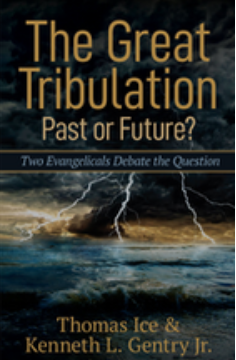
Debate book on the nature and timing of the great tribulation. Both sides thoroughly cover the evidence they deem necessary, then interact with each other.
See more study materials at: www.KennethGentry.com
Bauer’s rhetorically powerful observation highlights why orthodox preterists (along with many non-preterist evangelical scholars) speak of the “church age,” present Christian history since the first coming of Christ, as “the last days.” AD 70 is the beginning and the Second Advent is the end of “the last days.”
However, it is a serious mistake to claim that partial-preterism is dangerous because some have left it behind (!) and ventured off into hyper-preterism. If it were the case that partial-preterism leads inexorably to hyper-preterism, why are there more partial-preterists than hyper-preterists? Hyper-preterism is a recent theological abnormality, whereas partial preterism stretches back hundreds of years to the early centuries of Christianity. Should not all partial-preterists eventually be hypers?
Doctrinal use and abuse
Furthermore, using this line of reasoning all Christians would have to be careful of holding to any position, because every position can be twisted into heresy. Consider the following.
The free grace problem. Shall we deny free grace as the God-ordained means of salvation because some people have abused grace and galloped off into licentious conduct? Paul had to deal with that problem in his letter to the Romans: “What shall we say then? Are we to continue in sin so that grace may increase?” (Rom. 6:1). The Pharisees could have complained against Paul that his system of salvation by grace quite naturally leads people to that conclusion. But that was an abuse of the system.
This is much like hyper-preterists arguing that we are spiritually resurrected today (John 5:24-25; Eph. 2:6–7), and that is all there is to the resurrection concept in Scripture. They have a serious problem with understanding the theological principle of the “already but not yet.” That is, we are already resurrected spiritually, but this is in anticipation of ultimately being resurrected physically (notice how Jesus brings the two together in John 5:24-29). They are related but not identical. We are spiritually resurrected now, but not yet resurrected in the full and final sense of the word (body and soul).
The divine sovereignty problem. There are some Calvinists who go overboard with their view of God’s absolute sovereignty (which is taught in Scripture). They become hyper-Calvinists who believe it is not necessary to engage in evangelism or missions because God will sovereignly save whom he will, without our aid. Shall we therefore dismiss the Calvinistic view of God’s sovereignty? No, rather we should dismiss those who abuse the system.
The unity of God problem. If we look back in history (and even today) we find that some heretics properly observed that the Bible speaks of only one God and noted that God is, in fact, one (Deut. 6:4; 1 Tim. 2:5). On this basis, they wrongly rejected the idea of the Trinity, thinking they were “defending” the doctrine of the unity of God. This type of thinking led to all sorts of errors regarding God’s nature. But we must not dismiss the unity of God due to this abuse. Nor should we reject the doctrine of the Trinity on the opposite base.
Conclusion
This sort of problem arising due to hyper-preterism is actually anticipated in the Bible. Jesus warns that good seed can land on rocky soil and produce growth that only lasts awhile (Matt. 13:5–6). Paul warns of those who are blown about by every wind of doctrine (Eph. 4:14). John warns that there were some who “went out from us, but they were not really of us; for if they had been of us, they would have remained with us; but they went out, so that it would be shown that they all are not of us” (1 John 2:19).
Significantly, it is often the orthodox preterist who is the most vigorous opponent of hyper-preterism. No one wants to see their doctrinal system twisted and abused. Even if it seems like a lot of fun and creates a little group of fans.
The Divorce of Israel: A Redemptive-Historical Interpretation of Revelation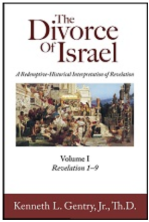
This long-awaited commentary has now been published. It is an 1800 page, two-volume deeply exegetical, academic commentary on the Bible’s most mysterious book.
Click: https://www.kennethgentry.com/the-divorce-of-israel-2-vols-by-gentry-pre-publication-offer/
See more study materials at: www.KennethGentry.com
June 11, 2024
JOHN, JESUS, AND THE JEWS
PMW 2024-045 by Kenneth L. Gentry, Jr.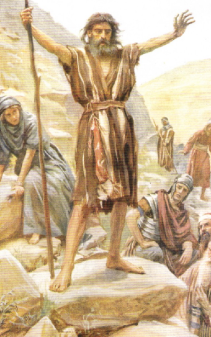
We are continuing our survey of the opening chapters of Matthew, showing how Israel is presented as opposed to God’s will and the Gentiles will gradually begin entering God’s kingdom.
In chapter three Matthew presents us with the first sermon recorded in his Gospel. It is by Jesus’ forerunner John the Baptist, who introduces the Messiah to Israel. The very first words we hear out of John’s mouth are foreboding: “Repent, for the kingdom of heaven is at hand” (Matt. 3:1). These are also Jesus’ first words in his ministry, as recorded by Matthew: “Repent, for the kingdom of heaven is at hand” (4:17). John and Jesus are confronting Israel with her sin and calling her to repent (cf. Matt. 23:37).
In this sermon John warns the Jewish religious leaders (Matt. 3:7) that they need to “bring forth fruit in keeping with repentance” (v. 8). Later we will discover that Israel does not bring forth the fruit of repentance, for Jesus acts out a prophetic curse against fruitless Israel (21:19) and declares that he will secure another nation to bear the proper fruit (21:43).
“In contrast to Mark who had spoken of ‘all Jerusalem’ going out to be baptized by John (Mark 1:5), Matthew presents this episode more negatively as an occasion when the Pharisees and Sadducees (3:7) came out to inspect John critically.” [1] Significantly, the Sadducees “were a priestly group of the Jewish aristocracy whose focus was temple service and administration” [2] and whose concern was especially related to the temple’s continuance (cf. John 11:47–48).
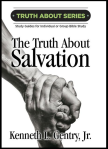 The Truth about Salvation By Ken Gentry
The Truth about Salvation By Ken Gentry
A study guide for personal or small group Bible study. Deals with the Christian doctrine of salvation from a Reformed theological perspective. It opens with a study of God as loving Creator, the shows how the first man fell into sin. Shows God’s righteousness requires that sin be dealt with. Presents Jesus as both God and man so that he can be man’s Savior. Includes review questions and questions for further study.Twelve chapters are ideal for one quarter of Sunday School.
See more study materials at: www.KennethGentry.com
John anticipates Israel’s rejection in Matthew 3:9–12, where he rebukes her leaders for boasting that Abraham is their father (v. 9). This rebuke is set over against Jesus’ righteous claim to Abrahamic descent (Matt. 1:1, 2, 17). Indeed, stones are more likely to become God’s people than stone-hearted Israel (3:9; cp. Luke 19:40; see also: Eze. 11:19; 36:26; Zech. 7:12). Nolland argues that by recording this statement, Matthew is preparing the way for a “radical rethinking of what it means to be the people of God,” which comes to strong expression at Matthew 8:10–12. [3]
John warns that “the axe is already laid at the root of the trees” (Matt. 3:10), which is an image of approaching divine judgment (Isa. 10:15–19, 33–34; Eze. 31; Dan 4:14). Turner notes that the adverb “already” and the present-tense verb “is being laid” strongly depict a “present process.” [4] In fact, the particle “already” (Gk., d) appears first in the statement, therefore in the emphatic position. “As the kingdom message is preached, those who reject it are already being marked out for judgment, even though the full force of that awful judgment has not yet been felt.” [5]
Consequently, “immediacy and certainty are implied.” [6] As Morris expresses it, “John regards the destruction as inevitable” and the judgment as “imminent.” [7] Nolland agrees. [8] This matches well with Olivet’s statement regarding the nearness of the events, as we shall see. (Unfortunately, despite these clear observations, the authors just cited do not see the passage as referring to AD 70! Rather, in their view it points to the “remote future” that is already beginning to intrude in the present.)
Nevertheless, that the axe is laid “at the root” powerfully teaches that God will not simply prune Israel; he will cut her down to her very root. Indeed, regarding Jesus, John declares (shifting his metaphor): “He who is coming” has a “winnowing fork is in His hand, and He will thoroughly clear His threshing floor; and He will gather His wheat into the barn, but He will burn up the chaff with unquenchable fire” (Matt. 3:12). This points to AD 70 (cp. 8:10–12; 22:7; cf. 7:16–20), which is typological of and anticipates the Final Judgment at the end of history. Or as Nolland well-expresses it: “the destruction of Jerusalem [is] the first installment of a universal judgment.”
[image error]For more information and to order click here.
" data-image-caption="" data-medium-file="https://postmillennialworldview.com/w..." data-large-file="https://postmillennialworldview.com/w..." class="alignright size-full wp-image-495" src="https://postmillennialworldview.com/w..." alt="" />God Gave Wine (by Ken Gentry)
A biblical defense of moderate alcohol consumption. Considers all key biblical passages and engages the leading objections.
See more study materials at: www.KennethGentry.com
In fact, Luke 13:6–9 records a parable of Jesus that reflects this same concern. There he pictures his three-and-one-half-year ministry to fruitless Israel, who is presented as a fig tree. The Lord declares: “for three years I have come looking for fruit on this fig tree without finding any. Cut it down! Why does it even use up the ground?” (v. 7). Later in Matthew 21:18–19 we will see Jesus engaging in prophetic theater in cursing the fig tree.
What is more, “in contrast to Mark who had spoken of ‘all Jerusalem’ going out to be baptized by John (Mark 1:5), Matthew presents this episode more negatively as an occasion when the Pharisees and Sadducees (Matt. 3:7) came out to inspect John critically.” Once again, as in the birth narrative, Matthew’s Gospel differs from the other Synoptics in casting a negative light on Israel.
While referencing this text, Wright states that “The warnings already mentioned, and those about to be discussed, are manifestly and obviously, within their historical context, warnings about a coming national disaster, involving the destruction by Rome of the nation, the city and the Temple.” Walker sees John’s statement regarding the “wrath to come” (3:7) as predicting “that the Temple would be abandoned by God (23:38) and destroyed (24:2) with its ‘holy place’ desecrated (24:15); the ‘holy city’ too would experience divine judgement.”
Unfortunately, “John’s title, ‘the Baptist’, can obscure what was in fact the main thrust of his ministry, an announcement of the imminent judgment of God and of the coming of the ‘greater one.’” Though he seeks repentance and conversion, he does so because of God’s holy wrath that will come upon Israel if she does not repent.
Notes
1. P. W. L. Walker, Jesus and the Holy City, p. 34.
2. J. K. Brown, Matthew (TTCS), 29.
3. R. T. France, Matthew (NICNT), 319.
4. David L. Turner, Matthew (BECNT) (Grand Rapids: Baker, 2008), 114.
5. Turner, Matthew, 114.
6. Turner, Matthew, 114.
7. Leon Morris, Matthew, 60 n. 39.
8. John Nolland, Matthew, 145. See also: Charles L. Quarles, Exegetical Guide toe the Matthew Greek New Testament (Nashville: B & H, 2017), 35. Leon Morris, The Gospel according to Matthew (PNTC) (Grand Rapids: Eerdmans, 1992), 60.
9. For example, Morris, Matthew, 60.
10. John Nolland, Luke 9:21–18:34 (WBC) (Dallas: Word, 1993). 861.
11. Walker, Jesus and the Holy City, 34.
12. N. T. Wright, Jesus and the Victory of God Minneapolis: Fortress, 1998), 323.
13. Walker, Jesus and the Holy City, 38.
14. France, Matthew (NICNT), 89
June 7, 2024
JESUS’ GENEALOGY AND GENTILES
PMW 2024-044 by Kenneth L. Gentry, Jr.
Having noted the importance of narrative flow in the Gospels, we will now begin considering some of the earlier chapters of Matthew. We will notice how Matthew begins with two themes that are important for postmillennialism: (1) The decline of Israel and (2) the inclusion of the Gentiles in God’s kingdom.
JESUS AND ABRAHAM
Matthew opens his Gospel by tracing Jesus’ genealogy back to Abraham, the “father” of the Jews (Matt. 3:9). [1] As we will see, Matthew will be presenting Jesus as the new Israel, the true, continuing Israel of God (cp. Gal. 6:15–16). [2] Thus, he begins Jesus’ story by tracing his genealogy to Israel’s own historical source, Abraham. In this he differs from the Gentile Luke who takes his genealogy all the way back to Adam, the historical source of all men (Luke 3:38).
In fact, Matthew even structures his genealogy in a remarkably-intriguing and rhetorically-important way. We see this as he summarizes it in 1:17: “Therefore all the generations from Abraham to David are fourteen generations; and from David to the deportation to Babylon fourteen generations; and from the deportation to Babylon to the time of Christ fourteen generations.”
Carter points out that “The repetition of the references to Abraham (1:1, 2) to David (1:1, 6), and to the Babylonian exile (1:11, 12) underlines God’s involvement with these figures and events. Verse 17 reinforces their central role by highlighting the genealogy’s three-part structure.” [3] So, as Mounce observes, Matthew intentionally arranges the names from Abraham to David to Christ “in groups of fourteen to coincide with the three important stages of Jewish history: the account of God’s people leading up to Israel’s greatest king; the decline of the nation, ending in Babylonian exile; the restoration of God’s people with the advent of the Messiah.” [4] France adds: “by organizing that history into a regular scheme of three groups of fourteen generations . . . it indicates that the time of preparation is now complete, and that in Jesus the time of fulfillment has arrived.” [5]
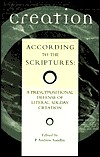 Creation according to the Scriptures
Creation according to the Scriptures
Ed. by P. Andrew Sandlin
This book is sub-titled: A Presuppositional Defense of Literal , Six-day Creation. It has chapters by R. J. Rushdoony, Andrew Sandlin, Kenneth Gentry, Cornelius Van Til, and others. It touches on historical, exegetical, theological, and philosophical implications of Six-day Creation.
See more study materials at: www.KennethGentry.com
Not only so but we find at least two features latent in Jesus’ genealogy that already hint at the Gentiles’ inclusion in God’s kingdom. The first is the emphatic reference to Abraham in Matthew’s first verse, which works backwards from Jesus to David to Abraham: “The record of the genealogy of Jesus the Messiah, the son of David, the son of Abraham” (Matt. 1:1). What do I mean?
This opening is significant in that the Abrahamic Covenant establishes a direct promise of blessings to the Gentiles. Indeed, at the very introduction of this covenant in its pre-covenantal presentation, God informs Abram/ Abraham: “I will bless those who bless you, / And the one who curses you I will curse. / And in you all the families of the earth will be blessed” (Gen. 12:3).” And this universalism continues throughout the covenant’s several iterations in the Genesis record (Gen. 15:1–6; 17:15– 27; 26:63; 28:11–12; 35:9–15). As Brown and Roberts see it, “the reference to Abraham evokes Gen 12:3. From its inception, the Abrahamic covenant was for the blessing of the nations.” [6] Thus, “the majority of commentators agree that this reference to the Son of Abraham anticipates the universalism of the Gospel.” [7]
GENTILE WOMEN
We also find a second issue within the actual genealogy itself. There we discover the inclusion of four Gentile women: Tamar from Aram, Rahab from Jericho, Ruth from Moab, and Bathsheba, a Hittite (Matt. 1:3–6). France notes that “the four ‘foreign’ women prepare the reader for the coming of non-Israelites to follow Israel’s Messiah, which will be foreshadowed in the homage of the magi in 2:1–12 and will be a recurrent and increasing theme throughout the gospel until it reaches its climax in the mission to all nations.” [8] (France’s quotation itself foreshadows the study that I am developing in this chapter!) Thus, as Brown and Roberts observe: “From the very beginning of his Gospel, Matthew gives prominence to the theme of gentile inclusion.” [9]
Three Views on the Millennium and Beyond
(ed. by Darrell Bock)
Presents three views on the millennium: progressive dispensationalist, amillennialist, and reconstructionist postmillennialist viewpoints. Includes separate responses to each view. Ken Gentry provides the postmillennial contribution.
See more study materials at: www.KennethGentry.com
GENEALOGICAL PROGRESS
In his opening presentation, the apostle highlights Israel’s lost glory in her rising to the magnificence of David’s rule only to decline from David to the exile. It then moves “up” once again by presenting Christ as Israel’s new king (cf. Matt. 2:2–3; 21:5) and only hope. Indeed, the very opening summary of Jesus’ genealogy includes King David along with Abraham: “The book of the genealogy of Jesus Christ, the son of David, the son of Abraham” (Matt. 1:1; cp. 1:17).
As we will see in our survey of Matthew, Israel rejects him (cf. Matt. 23:37; 27:42), causing him to re-organize the people of God by judging Israel and calling the Gentiles. Thus, Matthew’s account of Jesus’ genealogy anticipates AD 70 by recapping Israel’s history, showing its collapse from the glory days of King David all the way down to the Babylonian exile. Israel’s history will collapse once again, but will arise transformed under her new king, Jesus Christ.
McKnight summarizes the matter well:
“The most significant place to begin understanding Matthew’s polemic with nonmessianic Judaism is his presupposition that God has directed history to consummate it in Jesus Messiah, son of Abraham and son of David (1:1–17; 5:17–20; 21:33–46). For Matthew, the fulfillment of salvation-history takes place in Jesus Christ, and therefore the fulfillment of the people of God realizes itself in the new people of God, the church (16:18; 18:17).” [10]
Elsewhere McKnight also notes that “Jewish Christianity did not envisage itself as a new religion, but as a true manifestation of Judaism.” [11] Evans adds: “Early Christians did not view themselves as belonging to a religion that was distinct from Judaism. New Testament Christianity was Judaism — that is, what was believed to be the true expression of Judaism.” [12] Indeed, when Jesus is first mentioned in the historical narrative after the genealogy, we see the angel not only declaring his supernatural origin (Matt. 1:20), but also his redemptive mission (v. 21) and his fulfilling prophecy (vv. 22–23; cp. 2:2–6, 17–18, 23) — including a prophecy regarding Israel fulfilled in him (2:15).
NOTES
1. See also: Luke 1:73; John 8:39; cp. Exo. 3:6; Josh. 24:3; Isa. 51:2; Acts 7:2.
2. David E. Holwerda, Jesus & Israel: One Covenant or Two? (Grand Rapids: Eerdmans, 1995).
3. Carter, Matthew: Storyteller, 107.
4. Robert H. Mounce, Matthew (NIBC) (Peabody, Mass.: Hendrikson, 1991), 8.
5. France, Matthew (NICNT), 71. See also Norman A. Beck, Mature Christianity in the 21st Century: The Recognition and Repudiation of the Anti-Jewish Polemic of the New Testament (Rev. ed.: New York: Crossroad, 1994), 183–84
6. Jeannine Brown and Kyle Roberts, Matthew (THNTC) (Grand Rapids: Eerdmans, 2013), 25.
7. David R. Bauer, The Structure of Matthew’s Gospel: A Study in Literary Design (Sheffield, England: Almond, 1989), 76. See also: see: Michael J. Wilkins, Matthew (NAC) (Grand Rapids: Zondervan, 2004), 56. Grant R. Osborne, Matthew (ZECNT) (Grand Rapids: Zondervan, 2010), 57, 62. Leon Morris, The Gospel according to Matthew (PNTC) (Grand Rapids: Eerdmans, 1992), 20–21. Jeffrey A. Gibbs, Matthew 1:1–11:1 (CC) (St. Louis: Concordia, 2006), 77. Craig L. Blomberg, Matthew (NAC) (Nashville: B & H, 1992), 53.
8. R. T. France, The Gospel of Matthew (NICNT) (Grand Rapids: Eerdmans, 2007), 37.
9. Brown and Roberts, Matthew, 35.
10. Scot McKnight in Craig A. Evans and Donald A. Hagner, Anti-Semitism and Early Christianity: Issues of Polemic and Faith (Minneapolis: Fortress, 1993), 62.
11.Scot McKnight in Craig A. Evans and Donald A. Hagner, Anti-Semitism and Early Christianity: Issues of Polemic and Faith (Minneapolis: Fortress, 1993), 62.
12. Craig A. Evans, in Evans and Hagner, Anti-Semitism and Early Christianity, 11.
June 4, 2024
MATTHEW’S EARLY NEGATIVE EXPECTATIONS
 PMW 2024-043 by Kenneth L. Gentry, Jr.
PMW 2024-043 by Kenneth L. Gentry, Jr.
When reading Matthew, we should notice its narrative flow. Especially its presentation of Israel and her leaders as they oppose Christ from the very beginning. This flow leads inexorably to the Olivet Discourse and the judgment on the Temple.
MATTHEW 2:1
In Matthew 2:1 the Apostle reports that men “from the east” come to worship Jesus. This historical information is unique among the Gospels and is designed to stress Matthew’s particular thematic concern regarding the demise of Israel and the arising of the Gentiles in God’s plan. “The magi’s actions recall scenes such as those in Isa 60 and Ps 72 in which Gentiles bring gifts to acknowledge the final establishment of God’s reign on Mount Zion.” [1]
Because these Gentiles appear, “all Jerusalem [the capital of Israel and the holy city of the Jews] was troubled” at this news (2:3b). Thus, Matthew includes the story of Herod and the arriving of the Magi to show that “in this narrative the Jews and their king are ranged against the infant Jesus, but Gentiles do him homage.” [2]
Or as Carter expresses this:
“The Jerusalem leaders accurately instruct Herod from the Scriptures about the birthplace of the Christ (cf. 2:1 and 2:5–6). However, in contrast to the visitors from the East, they do not travel from Jerusalem to Bethlehem to worship and offer gifts. They do not interpret the Scriptures in relation to Jesus, and they do not act on their knowledge. The contrast negatively evaluates their failure to live in accord with God’s truth. This failure re-appears subsequently in other characters with the same evaluation.” [3]
The Truth about Postmillennialism By Ken Gentry
By Ken Gentry
A group Bible study guide for explaining the optimistic prophetic hope for this world to be accomplished before Christ’s Second Coming. Establishes the postmillennial system in both the Old and New Testaments. Touches on key eschatological issues, such as creation, covenant, interpretive methodolgy, the great tribulation, the Book of Revelation, the Jewish Temple, and more. It presents and answers the leading objections to postmillennialism.Twelve chapters are ideal for one quarter of Sunday School.
See more study materials at: www.KennethGentry.com
Thus, “from the outset [of Matthew’s Gospel] the audience learns Jerusalem is a powerful and dangerous place. It does not welcome God’s saving presence.” [4]
So then, the first mention of Jesus after his birth casts Jerusalem and Israel in a negative light, setting a pattern for things to come.
MATTHEW 2:13–15
Official Jewish opposition to Jesus’ birth is so violent (Matt. 2:13, 16) it requires that his parents flee with him to Egypt from where they eventually return (2:14–15). Providentially, then, Jesus’ early life re-enacts the story of Israel’s descent into Egypt and her ultimate deliverance into the Promised Land (2:13–23). So this subtly portrays Israel as a new Egypt, the enemy of God’s people, and Jesus as “the true Israel.” [5]
MATTHEW 2:18
Regarding Matthew 2:18, Walker explains that “the lament of Rachel portends a dire fate for Jerusalem and the nation.” [6] We should also note that this prophecy derives from Jeremiah (Matt. 2:17; cp. Jer. 31:15), the weeping prophet (Jer. 9:1; cp. Jer. 8:18; 13;17; Lam. 2:18), who highlights the weeping of Jerusalem (Jer. 4:31; 8:19; 14:2; 25:34–36; 46:12). He even wrote a book called “Lamentations,” emphasizing Jerusalem’s Old Testament judgment (Lam. 1:1, 7, 17; 2:13; 4:12). In fact, he “was an uncompromising preacher of judgment” who “could therefore anticipate the destruction of the Temple, the fall of the Davidic dynasty, the cessation of the sacrificial system and the ministry of the priesthood.” [7] Just as Jesus does — except that Jesus re-establishes the Davidic dynasty by fulfilling it as a spiritual reality (Matt. 2:2; ; 21:5; 27:11, 37; cp. Luke 1:32; Acts 2:29–33).
House Divided: The Break-up of Dispensational Theology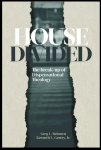 By Greg Bahnsen and Ken Gentry
By Greg Bahnsen and Ken Gentry
This book presents and defends Christian Reconstruction theology, particularly theonomic ethics and postmillennial eschatology. It does to by responding to dispensationalism’s social and exegetical theology.
For more educational materials: www. KennethGentry.com
CONCLUSION
Thus, Matthew opens his Gospel in a way that is radically different from the Gospel of the Gentile Luke. The Jewish Matthew reports regional fear (Matt. 2:3), angelic warning (2:12), desperate flight (1:13–14), kingly rage (2:16), infant destruction (2:16), and loud lamentation (2:18) surrounding Jesus’ birth and infancy. Whereas the Gentile Luke prepares for his birth by means of poetic celebration. In Luke 1 we have Mary’s Magnificat (Luke 1:46–55) and Zacharias’ Prophecy (1:67–79). His actual birth is announced by joyful angelic song (2:13–14). At this announcement, the Jewish shepherds hurry to Bethlehem in great joy (2:15–20). Shortly thereafter, Jesus is presented in the temple, sparking Simeon’s Hymn of Praise (2:25–32), which is followed by the prophetess Anna giving thanks to God (2:36–38). What a difference between Matthew’s record and Luke’s!
Thus, early-on in Jesus’ story, Gentiles are favorable to Jesus’ birth, while the Jews are fearful and their king is fearsome. The statement that “all Jerusalem” was “troubled” (Matt. 2:3) anticipates the holy city’s hostility to Jesus, which comes to full expression later in Matthew’s story (e.g., Matt. 16:21; 20:17–19; 23:37; 27:20, 25, 63–64). Gundry notes of this first reference to Jerusalem: “Matthew brings in Jerusalem as the center of antagonism toward Jesus.” [8] Walker agrees: “from the very outset of the Gospel, therefore, Jerusalem is portrayed as potentially negative towards Jesus.” [9]
Consequently, early in his narrative Matthew is preparing us for the Lord’s rejection by the Jews and his acceptance by the Gentiles (represented here by men “from the east”; cp. Matt. 8:11). We will be hearing Matthew’s steadily growing drumbeat announcing Israel’s approaching annihilation and the Gentiles’ remarkable acceptance.
NOTES
[1] Warren Carter, Matthew: Storyteller, 111.
[2] R. T. France, Matthew (NICNT), 34.
[3] Carter, Matthew: Storyteller, 112. See also p. 205.
[4] Carter, Matthew: Storyteller, 161.
[5] France, Matthew (NICNT), 86. Revelation overtly does this also (Rev. 11:1–2, 8). See my Kenneth L. Gentry, Jr., The Book of Revelation Made Easy (Powder Springs, Geo.: American Vision, 2010).
[6] Peter W. L. Walker, Jesus and the Holy City: New Testament Perspectives on Jerusalem (Grand Rapids: Eerdmans, 1996), 34.
[7] NBC,2 561, 562.
[8] Robert H. Gundry, Matthew: A Commentary on His Literary and Theological Art (Grand Rapids: Eerdmans, 1982), 27
[9] Walker, Jesus and the Holy City, 34.
May 31, 2024
NARRATIVE FLOW IN THE GOSPELS
 PMW 2024-042 by Kenneth L. Gentry, Jr.
PMW 2024-042 by Kenneth L. Gentry, Jr.
In my last posting I noted that an important issue impacting the preterist interpretation of the Olivet Discourse in Matthew is: narrative flow. We will now briefly consider this matter.
GOSPEL GENRE
To properly recognize Matthew’s redemptive-historical flow, we must understand that the Gospels are not biographies per se. J. K. Brown declares Matthew to be “theological history or theological biography.” This is a helpful observation, though more needs to be said.
Gospel scholar John Wenham notes that “gospel” is a “newly invented genre.” Therefore, Warren Carter states that “because of their theological content and pastoral orientation,” the Gospels are “a unique genre in the ancient world.” Clark Pinnock explains that “these works constitute a new literary phenomenon. They are not biographies as such, for they omit much material normally found in such works.”
Thus, New Testament scholar Donald Guthrie can observe that “the marked difference between the gospels … and all other biographical works is crucial if we are to appreciate to the full the uniqueness of these works.” Though this newly created literary genre is a sub-class of a biography, “it has to be concluded that there are no adequate parallels to the genre of the gospels.”
 Political Issues Made Easy
Political Issues Made Easy
by Kenneth Gentry
Christian principles applied to practical political issues, including the importance of borders, the biblical warrant for “lesser-of-evils” voting, and more. A manual to help establish a fundamentally biblical approach to politics. Impressively thorough yet concise.
See more study materials at: www.KennethGentry.com
GOSPEL FUNCTION
In light of this, we must recognize of these inspired documents that:
The Gospels (including Matthew) are highly-selective, theologically-oriented, redemptively-motivated, situationally-informed, and carefully-structured narrative presentations of the Lord’s ministry and message. Thus, their genre is best described as “theological history.”
Let’s consider these matters.
Highly-selective. The Gospels are obviously selective in that they focus almost wholly on the three-and-one-half-year ministry of Jesus at the end of his thirty-three-year long life (Luke 3:23; cp. 13:6–7). This leaves huge gaps in our understanding of his life that would not be tolerated in a biography. What is more, they even disproportionately concentrate on just one week of his three-and-one-half-year ministry leading up to and including his death, burial, and resurrection (Matt. 21–28; Mark 11–16; Luke 19:29–24 [cf. Luke 9:9:31, 51, 53; 13:33]; John 12–21).
In addition, we know from the brief record of many of Jesus’ teaching sessions, and from the differences between the wording of the parallel Gospel narratives, and the occasional appearance of unique material in each of the Gospels that each one is abbreviated by its own writer. In fact, “in all probability Jesus originally uttered one connected, coherent eschatological discourse from which the three Synoptists have chosen to reproduce different portions in different places” (Craig Blomberg). Differences also probably occur due to Jesus having most often spoken in Aramaic, which is translated into the Greek of the New Testament.
Theologically-oriented. The Gospels are theological in that they are designed to show that Jesus is the Son of God. They present him as being simultaneously, fully, and uniquely both God and man (e.g., Matt. 4:3, 6; 8:29; 27:40, 54). And as God’s Son, he was sent into the world in order to fulfill the Old Testament prophecies so that men might be saved from their sins through his redemptive work (Matt. 1:21; 18:11; 20:28; 26:28; cp. Luke 19:10).
Redemptively-motivated. The Gospel writers are motivated by the desire to encourage true faith in and a deep commitment to him as the Savior of sinners (Matt. 7:24–27; 13:18–23; 19:16–26; 28:18–20; cp. John 20:30–31; 21:25). They aim at persuading men of Jesus’ true identity for the purpose of convicting them of their sin and drawing them into a personal, spiritual relationship to him. This is so that their lives might be fundamentally changed by being oriented to serving the Son and the Father by the power of the Spirit.
[image error]For more information and to purchase click here.
" data-image-caption="" data-medium-file="https://postmillennialworldview.com/w..." data-large-file="https://postmillennialworldview.com/w..." class="alignright size-full wp-image-213" src="https://postmillennialworldview.com/w..." alt="Predestination Made Easy" />Predestination Made Easy
(by Ken Gentry)
A thoroughly biblical, extremely practical, and impressively clear presentation of
the doctrine of absolute predestination.
See more study materials at: www.KennethGentry.com
Situationally-informed. The Gospels are situational in that they arise out of specific historical circumstances surrounding each individual writer and his audience. We may detect this in various rhetorical emphases in them. For instance, R. T. France argues that “the predominant use of Matthew in the early church is, therefore, not hard to understand. It met more directly than the other gospels some of the deep-seated needs of the church; as a teaching document it provided, both in form and in content, what the church and its leaders wanted” while Christianity was being established as a missionary faith in the world.
However, I would note that the Gospels are only moderately situational. They are not to be approached in terms of Redaction Criticism, in which the Evangelists are often assumed to be inventing Jesus’ history and teachings for the later church.
Carefully-structured The Gospels are carefully structured in their presenting Jesus’ ministry and message rather than being a random assortment of facts about his life. Each writer has his own unique structure leading to his own conclusions. As David Bauer notes: “almost all scholars agree that Matthew has carefully, even meticulously, structured his Gospel.” W. D. Davies argues that Matthew “reveals not only a meticulous concern, numerically and otherwise, in the arrangements of its details, but also an architectonic grandeur in its totality.” John P. Meier comments that “under the rubric of structure we are considering the structure consciously intended by the author” which is important in that “Matthew is a superb ‘verbal architect,’ building his literary basilica with many finely fitted, interlocking stones.”
GOSPEL ARTISTRY
Thus, France can write: “all who have studied Matthew’s Gospel in detail have been impressed by the care and literary artistry involved in its composition,” including its “overall structure … with its dramatic development.” Gundry has even titled his 1982 commentary: Matthew: A Commentary on His Literary and Theological Art. Similarly, consider Paul Gaechter’s earlier 1965 German commentary, which was translated into English in 2013 as: Literary Art in the Gospel of Matthew. Kennedy K. Ekeocha observes that “Matthew is widely recognized as one of the most artistic and structurally organized books of the New Testament.”
Because of this we can easily discern in Matthew (my special focus in this book) the enormous redemptive-historical significance of Israel’s judgment in AD 70. This judgment will permanently close down the old covenant economy focusing on Israel and open up God’s direct dealings with the Gentiles under the new covenant. This will quickly result in changing Israel’s religion from biblical Judaism to Rabbinic Judaism. Anthony Saldarini notes: “the Romans destroyed the temple in 70 CE, with the resulting transformations in Jewish society.”

Standard Bearer: Festschrift for Greg Bahnsen (ed. by Steve Schlissel)
Includes two chapters by Gentry on Revelation and theonomy. Also chapters on apologetics, politics, ecclesiology, covenant, and more.
See more study materials at: www.KennethGentry.com
France comments:
The temple is the visible symbol of the old regime; its fall is not just the loss of a building but the end of an era. The kingdom of the Son of Man will be established in its place, and the greate discourse will reach its climax in the vision of the Son of Man ultimately enthroned in power and prounouncing judgment ofer all the nations.
We may one again helpfully cite France who notes that:
we hear repeatedly Jesus’ condemnation of “this generation” for its failure to recognize God’s messengers and to respond to his call (11:16–24; 12:38–45; 16:4; 17:17), culminating in the clear warning that now the rebellion of Israel has gone too far, and that the time for judgment has come (23:29–36), which leads on in its turn to the prediction of the destruction of the temple (23:37–39; 24:2ff., leading up to 24:34, ‘this generation’).
In addition, France even observes that one of the four “Central Theological Emphases of Matthew” is “the people of God,” which includes a focus on “the failure of Israel.” Israel’s failure is so pronounced that we may discern “a note of finality this time which is particularly pronounced in Matthew’s account.” In the end, Matthew shows how Jesus’ ministry “has broken out of the confines of Judaism and in so doing has brought to an end the exclusive privilege of the Jews as the people of God” (cf. Matt. 9:16–17).
Leon Morris agrees: “There can be no doubt that these [kingdom statements] point to a Jewish way of thinking, but no doubt either that this Evangelist looks for them to be fulfilled in the followers of Jesus, not the Jewish nation.” As John Nolland puts it: “There is a huge paradox involved in Jesus, who comes to announce to Israel the restoration of the kingdom, ending his ministry with an alliance of all the Jerusalem leaders and all the Jewish people baying for his blood.”
GENRE PLOT
The major plot in all four Gospels is to present the life, ministry, death, and resurrection of Jesus Christ. “In the case of the Gospels, the climactic point comes at the death of Jesus on the cross, as all plotlines lead to this moment in the story” (J. K. Brown). However, each Gospel also employs various sub-plots to fill out the story of his ministry, its meaning, and impact. In Matthew, one of the sub-plots is the Jewish rejection of Jesus and the Gentile’s reception. The Olivet Discourse is a key climax to this sub-plot’s theme, which emphasizes God’s judgment on Israel (Matt. 24:4–35), showing that it is a foreshadowing of the Final Judgment on all men (Matt. 24:36–46). This sub-plot reaches its resolution in the Great Commission to all the nations, for “from the very beginning of his Gospel, Matthew gives prominence to the theme of gentile inclusion.”
So it is necessary to survey Matthew’s record. This is necessary for showing that not only does Christ himself frequently allude to and occasionally directly prophesy the approaching AD 70 catastrophe, but that Matthew intentionally structures his Gospel so as to strongly emphasize it. As France puts it: “Jesus’ predictions of the destruction of Jerusalem, while they occupy a significant place in each of the Synoptic Gospels, are more strikingly emphasized in Matthew.”
Matthew does this in two basic ways. He does so explicitly through his record of Jesus’ direct and pointed teaching material. And he does this implicitly by highlighting the Lord’s various symbolic actions and subtle images that develop the Gospel’s sub-plot, which fills out the over-arching storyline. Thus, Matthew employs the literary device known as “foreshadowing.” As Blomberg notes “well-crafted stories often leave clues for readers to help them anticipate what will come later.”
Tongues-speaking: Meaning, Purpose, and Cessation
 by Ken Gentry
by Ken Gentry
The position presented within is that tongues-speaking allowed the gift person to speak in a known human language without previously knowing it; tongues brought inspired revelation from God; the gift was a sign confirming the apostolic witness and warning of the coming destruction of Jerusalem; and therefore the gift ceased in the first century.
See more study materials at: www.KennethGentry.com
Kenneth L. Gentry Jr.'s Blog
- Kenneth L. Gentry Jr.'s profile
- 85 followers



